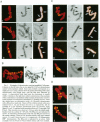Abstract
Previous analyses by fluorescence in situ hybridization of structures present 20-30 cell generations after the primary events of mammalian gene amplification have shown that tens of megabases of DNA separate each copy of the selected gene in chromosomal arrays that contain up to 15 copies. Since these structures are very unstable, it is necessary to study amplified DNA as soon as possible after it has been formed to relate the structures observed to the primary mechanisms that generated them. Previously, new amplifications of the CAD gene were analyzed in colonies of 10(5) N-(phosphonoacetyl)-L-aspartate-resistant Syrian hamster BHK cells. CAD is on the p arm of chromosome B9 and the amplified genes were usually found in large extensions of B9p, with one copy in its normal position. We now report that dividing drug-resistant cells have been physically separated from static drug-sensitive cells, to allow the amplified structures to be observed only a few cell generations after they have been formed. The most informative results are that about one-third of the newly formed chromosomes carrying amplified CAD genes are dicentric and that about half of these carry two B9q arms. These observations reveal that recombination between the p telomeric regions of two B9 sister chromatids is an important primary event of amplification in this system. The resulting dicentric chromosomes can then enter bridge-breakage-fusion cycles that provide the means to increase the number of CAD genes per cell in successive generations by an asymmetric distribution at each cell division.
Full text
PDF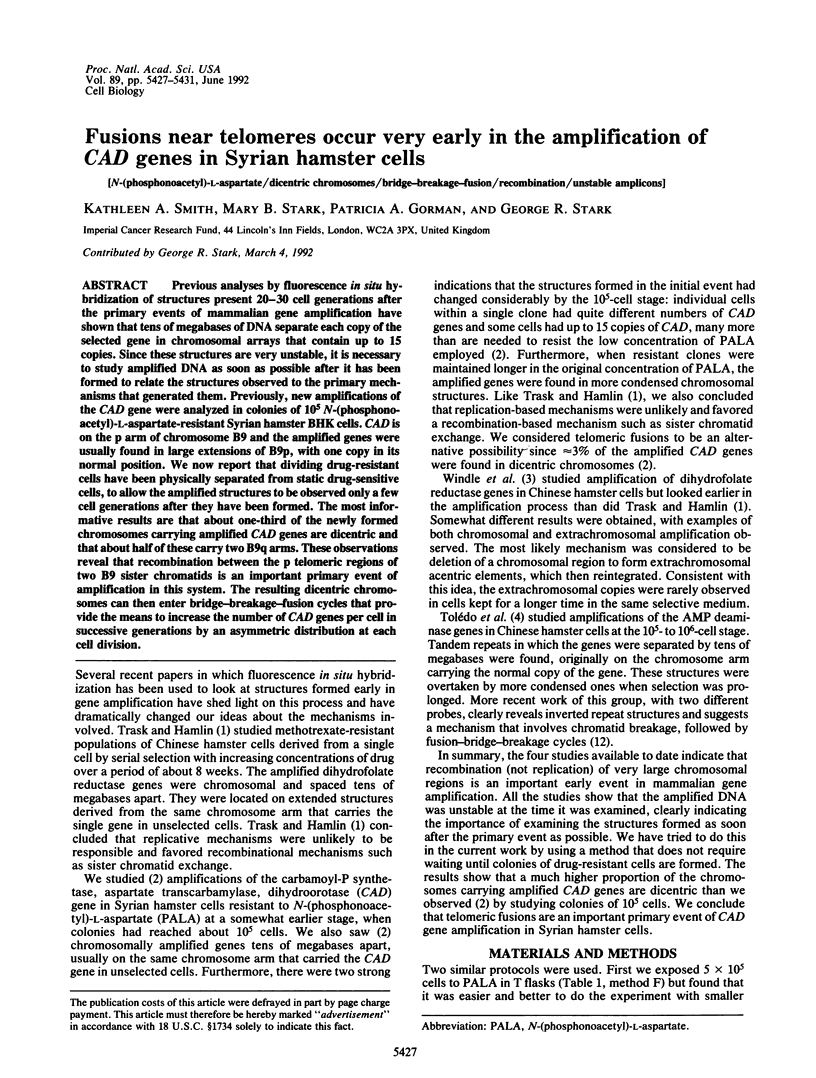
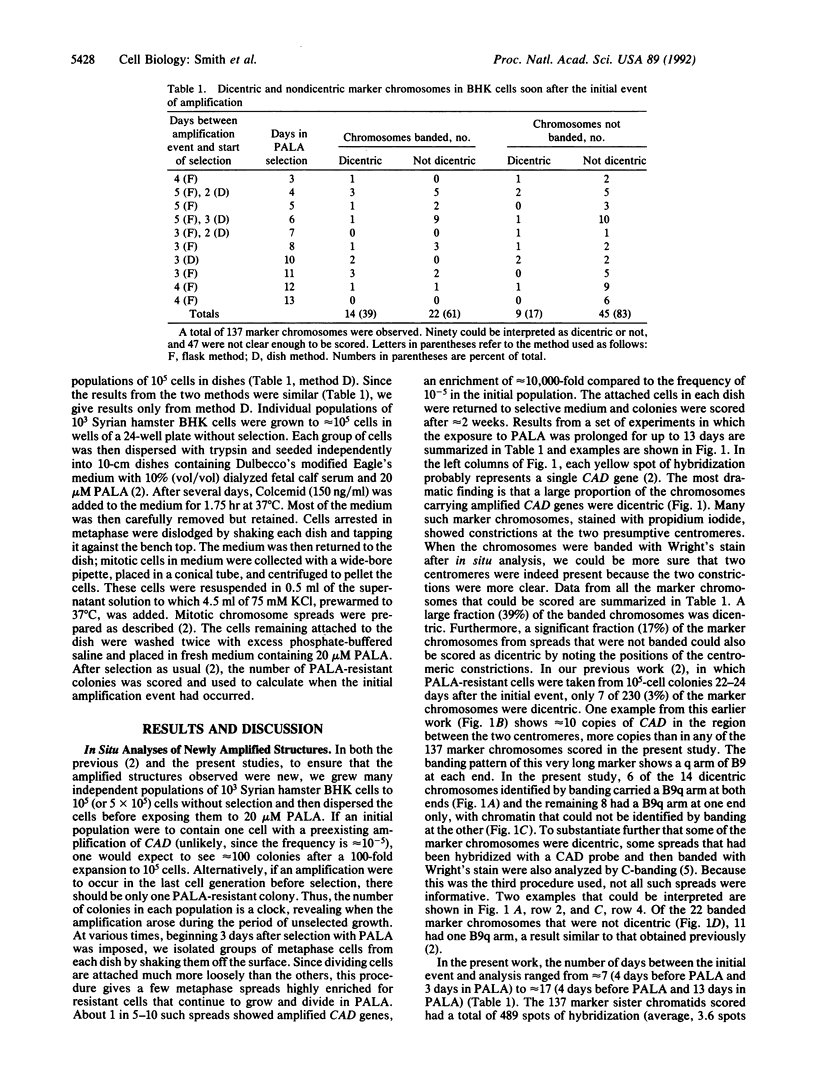
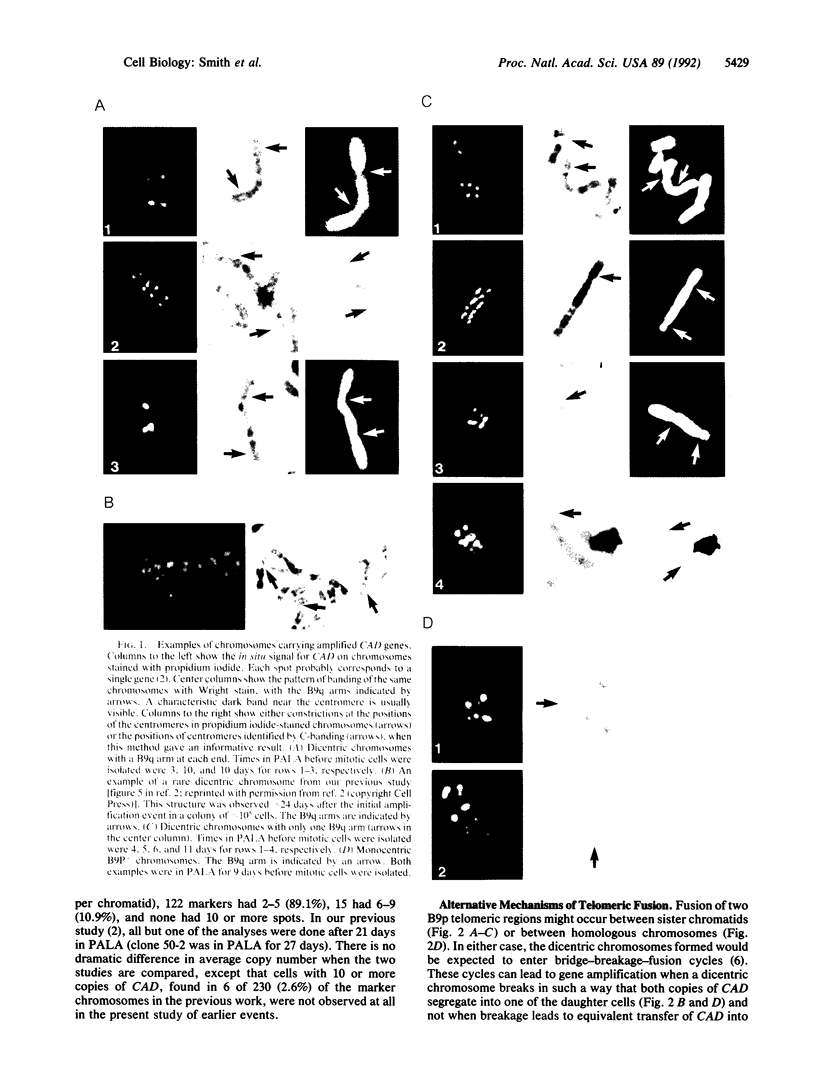
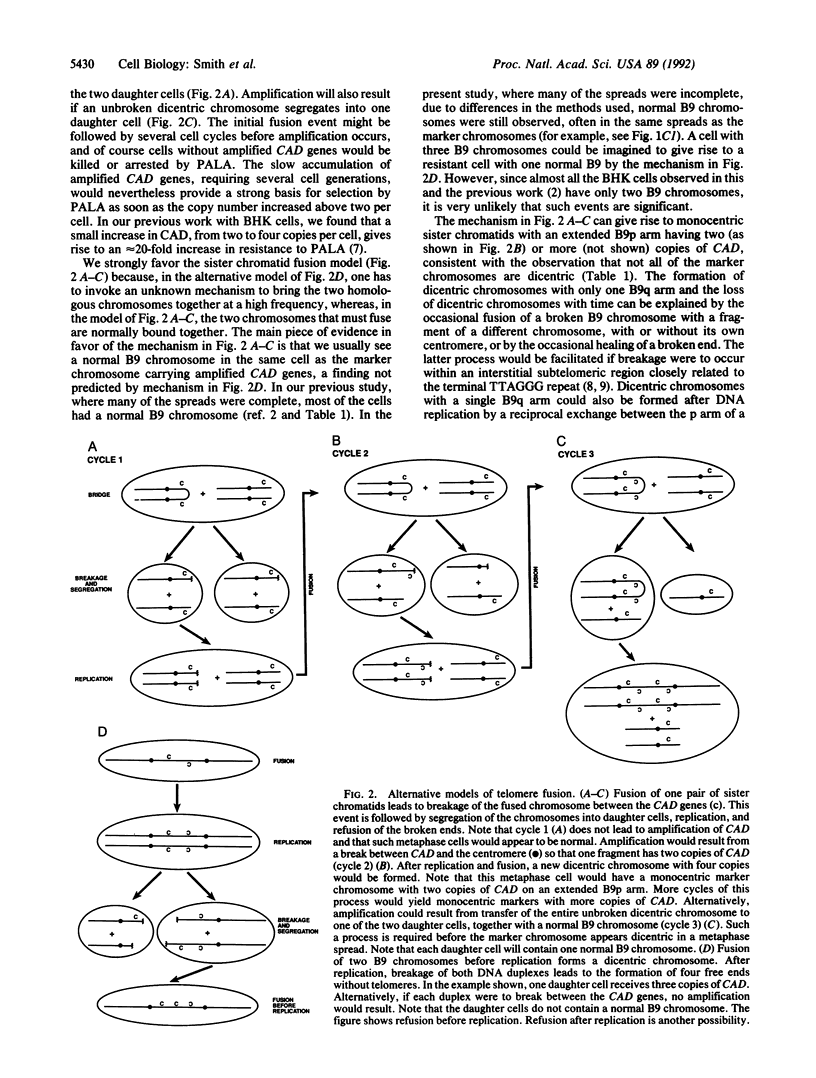
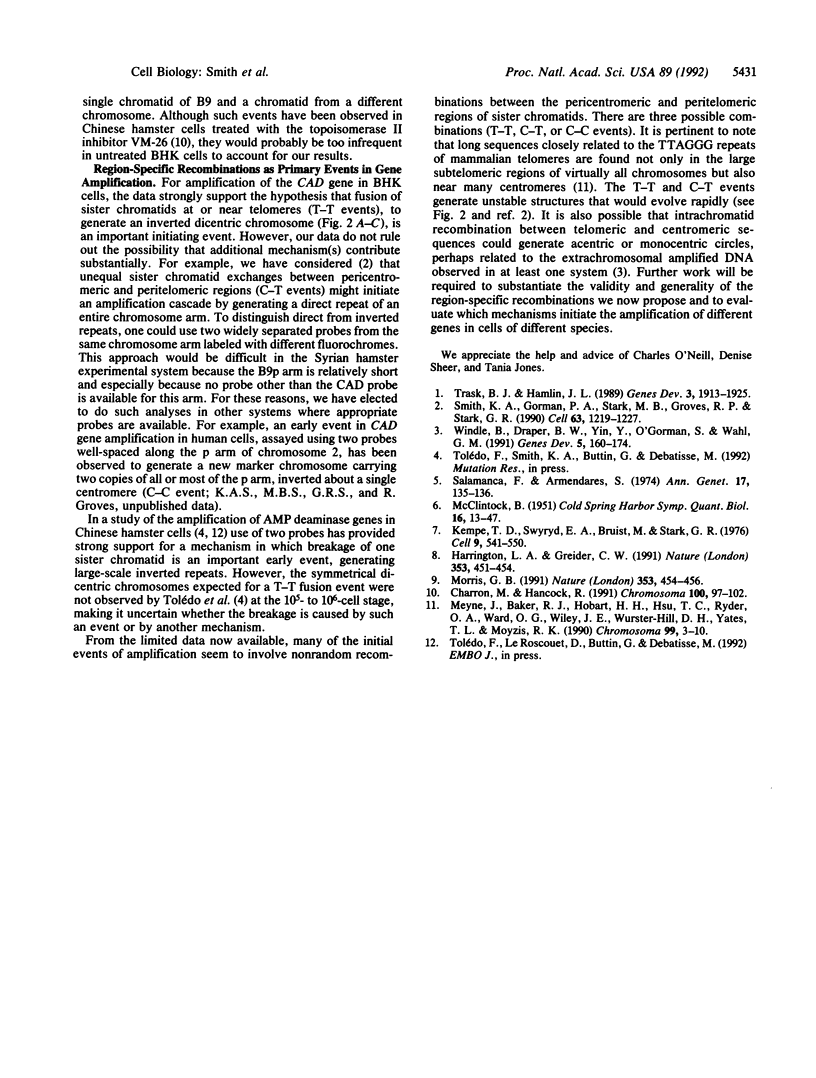
Images in this article
Selected References
These references are in PubMed. This may not be the complete list of references from this article.
- Charron M., Hancock R. Chromosome recombination and defective genome segregation induced in Chinese hamster cells by the topoisomerase II inhibitor VM-26. Chromosoma. 1991 Feb;100(2):97–102. doi: 10.1007/BF00418242. [DOI] [PubMed] [Google Scholar]
- Harrington L. A., Greider C. W. Telomerase primer specificity and chromosome healing. Nature. 1991 Oct 3;353(6343):451–454. doi: 10.1038/353451a0. [DOI] [PubMed] [Google Scholar]
- Kempe T. D., Swyryd E. A., Bruist M., Stark G. R. Stable mutants of mammalian cells that overproduce the first three enzymes of pyrimidine nucleotide biosynthesis. Cell. 1976 Dec;9(4 Pt 1):541–550. doi: 10.1016/0092-8674(76)90036-2. [DOI] [PubMed] [Google Scholar]
- McCLINTOCK B. Chromosome organization and genic expression. Cold Spring Harb Symp Quant Biol. 1951;16:13–47. doi: 10.1101/sqb.1951.016.01.004. [DOI] [PubMed] [Google Scholar]
- Meyne J., Baker R. J., Hobart H. H., Hsu T. C., Ryder O. A., Ward O. G., Wiley J. E., Wurster-Hill D. H., Yates T. L., Moyzis R. K. Distribution of non-telomeric sites of the (TTAGGG)n telomeric sequence in vertebrate chromosomes. Chromosoma. 1990 Apr;99(1):3–10. doi: 10.1007/BF01737283. [DOI] [PubMed] [Google Scholar]
- Morin G. B. Recognition of a chromosome truncation site associated with alpha-thalassaemia by human telomerase. Nature. 1991 Oct 3;353(6343):454–456. doi: 10.1038/353454a0. [DOI] [PubMed] [Google Scholar]
- Salamanca F., Armendares S. C bands in human metaphase chromosomes treated by barium hydroxide. Ann Genet. 1974 Jun;17(2):135–136. [PubMed] [Google Scholar]
- Smith K. A., Gorman P. A., Stark M. B., Groves R. P., Stark G. R. Distinctive chromosomal structures are formed very early in the amplification of CAD genes in Syrian hamster cells. Cell. 1990 Dec 21;63(6):1219–1227. doi: 10.1016/0092-8674(90)90417-d. [DOI] [PubMed] [Google Scholar]
- Trask B. J., Hamlin J. L. Early dihydrofolate reductase gene amplification events in CHO cells usually occur on the same chromosome arm as the original locus. Genes Dev. 1989 Dec;3(12A):1913–1925. doi: 10.1101/gad.3.12a.1913. [DOI] [PubMed] [Google Scholar]
- Windle B., Draper B. W., Yin Y. X., O'Gorman S., Wahl G. M. A central role for chromosome breakage in gene amplification, deletion formation, and amplicon integration. Genes Dev. 1991 Feb;5(2):160–174. doi: 10.1101/gad.5.2.160. [DOI] [PubMed] [Google Scholar]



